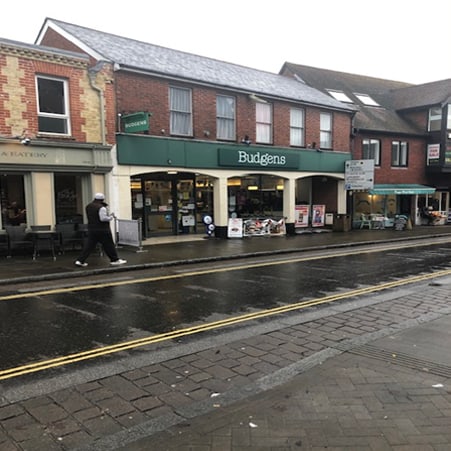
What Are Schedules of Condition?
They are comprehensive reports that meticulously document the state of a commercial rental property on a specific date. These detailed surveys provide an in-depth record of the premises, ensuring that all aspects of the building's condition are thoroughly assessed and recorded for reference.
In many instances, schedules of conditions (SoC) reports are crucial for legal (lease or contractual) purposes and can be extremely helpful in the event of any disagreements, particularly in preventing or minimizing issues in potential dilapidations claims under the lease terms. It also plays a vital role in identifying any conditions with a property before committing to a lease agreement.
These detailed records can be presented in a variety of forms, including photographic formats. These are referred to as a Photographic SoC. A Full SoC includes text, along with photos and sometimes video.
What Are Schedules Of Condition Used For?
They can be prepared for a range of different reasons.
- These reports document the property's condition before a lease begins, identifying defects and clarifying maintenance responsibilities.
- They also help at lease end by outlining property conditions to determine repair or reinstatement responsibilities.

These reports can be used when a new lease is entered into, providing a detailed account of the premises’ condition before the lease starts, ensuring that any existing defects and necessary repairs are identified upfront. This proactive approach not only protects both parties involved but also ensures a smooth leasing process by clarifying maintenance responsibilities from the start. Our expert team is prepared to assist you with all your survey needs to ensure a smooth leasing process.
They can also play a crucial role towards the end of a lease agreement. In such instances, it serves to clearly outline the condition of the property, helping to determine responsibility for any necessary repairs or reinstatement at the conclusion of the lease term.
What Should Be Included?
There are no set legal guidelines dictating the specific contents of these records.

When preparing a SoC, some important elements to include are:
- A clear statement about the purpose of the report
- A record of any pre-existing issues and their extent
- Technical drawings
- Clear details regarding the location and extent of the property and premises
- A general description of the premises construction
- Clear definitions of terms used to describe conditions in the property
- A clear statement of the time of the inspection, as well as what the date was, and weather condition
- Photographs (these are some of the most important materials to be included). Videos as well as panoramas and drone footage can also be helpful
- A written record of the location, nature and condition of each item inspected (inside and out)
- Details regarding any specific tests taken on the property (for example, damp testing)
The Importance Of Photographs And Text
A crucial aspect of these records is the detailed photographic record.

It is crucial that the photographs accurately depict the property. For instance, if a landlord claims there are issues with the property but the photos taken beforehand do not clearly show their current state, then their value will be limited.
- Photos alone provide a limited view of a property's condition, often missing critical details without written descriptions.
- A thorough assessment requires both visual documentation and written explanations to identify potential issues accurately.
The proper and combined use of both Photos and Text can give much greater weight to the report.
How Does Dilapsolutions Deal With Schedules Of Condition?
Dilapsolutions’ expert chartered surveyor team is made up of professionals who can provide a full SoC service, including:
- Performing a full and thorough inspection of the building
- Our chartered surveyors can provide a condition survey of all accessible areas of the property
- Our chartered surveyors will document the property using photographs combined with text descriptions – vital when preparing a robust report
Our expert team at our sister chartered surveying consultancy Raeburn Consulting specializes in negotiating lease terms for commercial and leisure properties across the UK and ROI. This allows us to effectively manage your exposure to excessive repairing liabilities not only by conducting thorough surveys, including high-quality SoC reports, but also by utilizing other tools to exclude certain elements altogether, ensuring that you are protected from unexpected costs.
It is important to remember:
- Repair Obligations in Leases: In England & Wales, tenants are often legally required to return a property in better condition than when they leased it, even if it was in poor condition initially.
- Financial Risk for Tenants: Without proper safeguards, tenants may be liable for costly repairs, including full replacements of deteriorated elements (e.g., windows, roofs).
- Importance of Surveys: A detailed surveyor’s report before signing a lease helps tenants understand their potential repair responsibilities and avoid unexpected costs.
- Role of a Schedule of Condition (SoC): An SoC records the property’s state at lease start, which can limit a tenant’s liability, though it does not fully protect against inevitable wear and tear.
- Landlord Considerations: Landlords benefit from clear lease terms and surveys to ensure tenants maintain the property and cover necessary repairs.
Get In Touch
Regardless of whether you require a chartered building surveyor to identify and cost required reparations or a chartered valuation surveyor to assess to what extent (if any) the breaches impact the property’s freehold value, you can rely on us to provide the most reliable property expert witness personnel.
We have built a reputation for providing the highest calibre of both types of property expert dilapidations witness in dilapidations cases with the experience and qualifications to deliver the best possible outcome for your individual situation.
Services
Dilapsolutions
Chartered Surveyors






